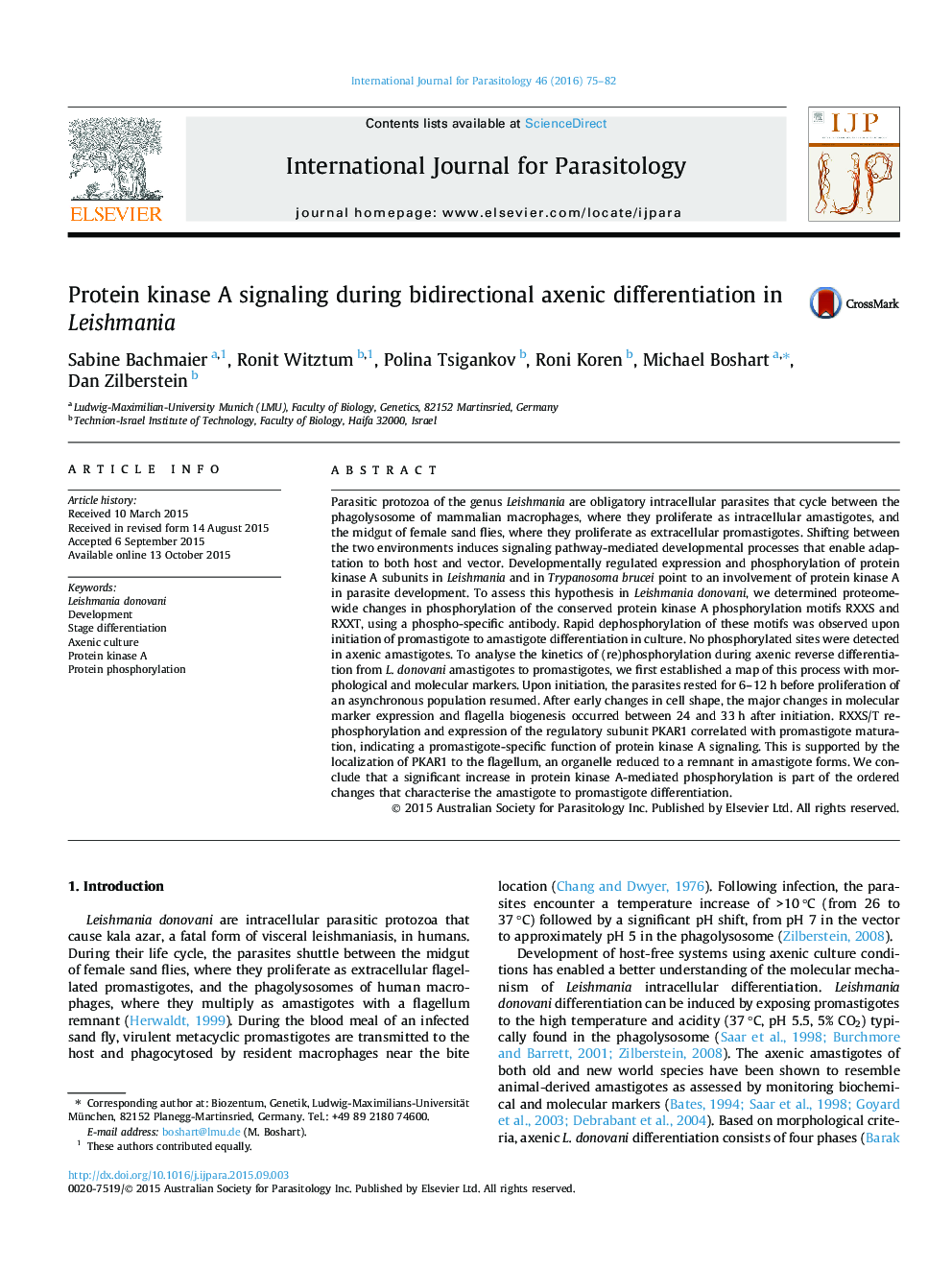| کد مقاله | کد نشریه | سال انتشار | مقاله انگلیسی | نسخه تمام متن |
|---|---|---|---|---|
| 2435961 | 1107237 | 2016 | 8 صفحه PDF | دانلود رایگان |

• Global RXXS/T site phosphorylation is rapidly lost upon promastigote and amastigote differentiation in Leishmania donovani.
• RXXS/T site phosphorylation is a reliable PKA-specific marker and correlated with PKAR1 subunit abundance.
• Flagellar localization and upregulation of PKAR1 indicate a promastigote-specific function of PKA signaling.
Parasitic protozoa of the genus Leishmania are obligatory intracellular parasites that cycle between the phagolysosome of mammalian macrophages, where they proliferate as intracellular amastigotes, and the midgut of female sand flies, where they proliferate as extracellular promastigotes. Shifting between the two environments induces signaling pathway-mediated developmental processes that enable adaptation to both host and vector. Developmentally regulated expression and phosphorylation of protein kinase A subunits in Leishmania and in Trypanosoma brucei point to an involvement of protein kinase A in parasite development. To assess this hypothesis in Leishmania donovani, we determined proteome-wide changes in phosphorylation of the conserved protein kinase A phosphorylation motifs RXXS and RXXT, using a phospho-specific antibody. Rapid dephosphorylation of these motifs was observed upon initiation of promastigote to amastigote differentiation in culture. No phosphorylated sites were detected in axenic amastigotes. To analyse the kinetics of (re)phosphorylation during axenic reverse differentiation from L. donovani amastigotes to promastigotes, we first established a map of this process with morphological and molecular markers. Upon initiation, the parasites rested for 6–12 h before proliferation of an asynchronous population resumed. After early changes in cell shape, the major changes in molecular marker expression and flagella biogenesis occurred between 24 and 33 h after initiation. RXXS/T re-phosphorylation and expression of the regulatory subunit PKAR1 correlated with promastigote maturation, indicating a promastigote-specific function of protein kinase A signaling. This is supported by the localization of PKAR1 to the flagellum, an organelle reduced to a remnant in amastigote forms. We conclude that a significant increase in protein kinase A-mediated phosphorylation is part of the ordered changes that characterise the amastigote to promastigote differentiation.
Figure optionsDownload high-quality image (70 K)Download as PowerPoint slide
Journal: International Journal for Parasitology - Volume 46, Issue 2, February 2016, Pages 75–82